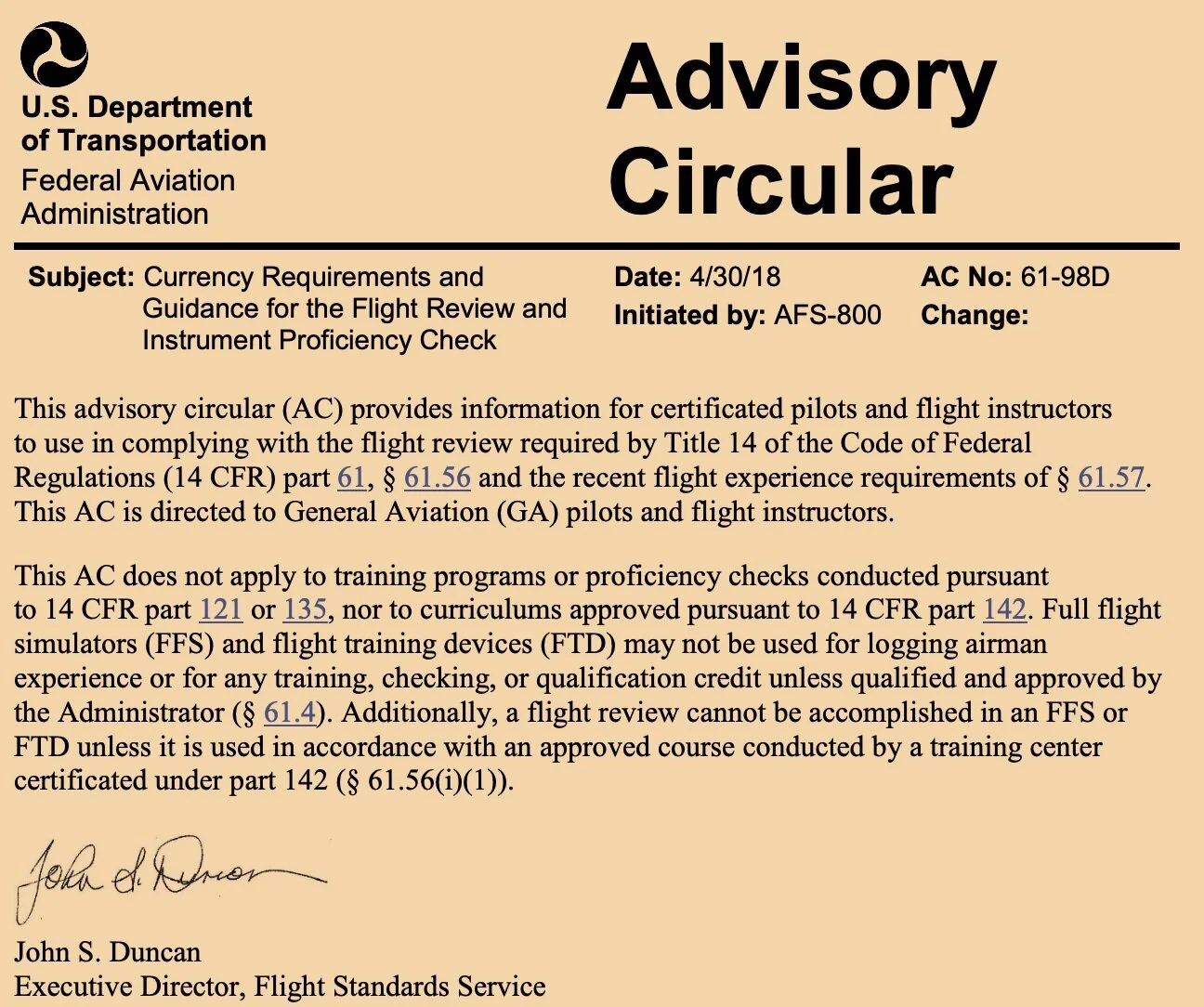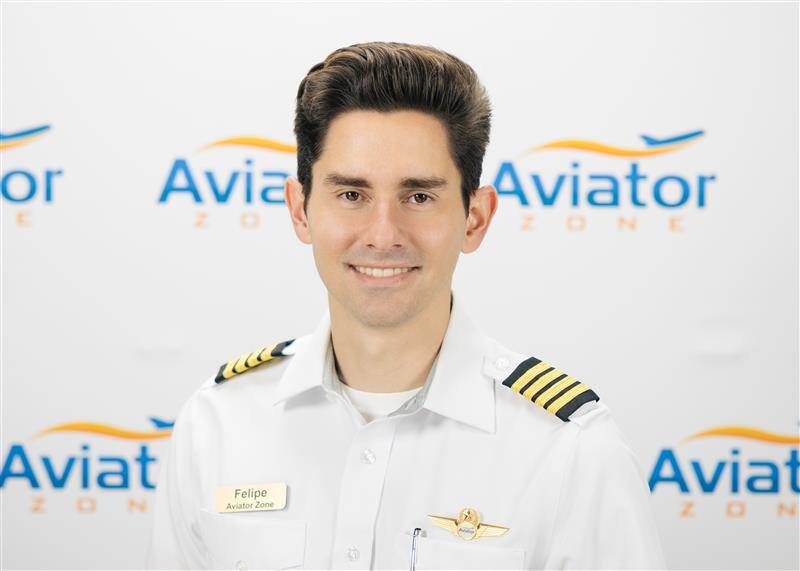With commercial travel still below pre-pandemic levels, staying current with your commercial pilot license is more important than ever.
Today we’ll look at the following three common SFAR regulations;
Flight Review
VFR Day and Night
IFR Recency Experience
Followed by a Q&A submitted by our readers and students.
Keep in mind that prescribed minimums and legality doesn’t guarantee safety. Be aware of your limitations. Always refer to the appropriate Federal Aviation Regulations for the most up to date and accurate information.
Flight Review §61.56
All pilots are required to complete a flight review every 24 calendar months. The flight review must be a minimum of 1 hour of flight instruction and 1 hour of ground instruction. The flight review requirement resets every time you pass a check ride with an examiner.
VFR - day and night §61.57(a)(b)
The basics - no Pilot in Command (PIC) may act as PIC of an aircraft unless he is current within the last 90 days. So how does one stay current? Within the last 90 days, you must have made a minimum of 3 takeoffs and landings in the same category, class, and type. For day currency, the takeoff and landings can be touch and goes. For night currency, they must be to a full stop.
IFR - Recency Experience §61.57(c)
Instrument is a lot easier. Within the last six months, you must do the following in actual or simulated conditions:
Six instrument approaches.
Holding procedures and tasks.
Intercepting and tracking courses through the use of navigational electronic systems.
So if you don’t keep current a pass a year mark, you will need the famous Instrument Proficiency Check (IPC). Something I would recommend to do every year even if not required. The IPC is basically an instrument check ride with a flight instructor, worth the money!

Come prepared! Download and review the information on this Advisory Circular, your instructor will use it!
Frequently Asked Questions
Q. I haven’t flown in a few years. I need a flight review, IPC, and landing currency. Can I do them all in one flight?
A. §61.56(h) — The requirements of this section may be accomplished in combination with the requirements of §61.57 and other applicable recent experience requirements at the discretion of the authorized instructor conducting the flight review. We do not recommend doing everything at once, flight review and landing currency yes, but I would save the IPC for another day.
Q. I haven’t flown in a long time, do I need to do all the flight reviews I have missed?
A. No, you only require one flight review within the preceding 24 calendar month to remain current.
Q. I haven’t flown in a long time. Do you think I can do my flight review in an hour?
A. It all depends on the student, if you study at home and come prepared for the ground, you will definitely finish in the minimum, and if you study the maneuvers as well. If you show up unprepared and don’t keep up, don’t expect a minimum flight review.
Q. I got my Private Pilot Certificate 3 years ago and my instrument rating 1 year ago. Looking to get back into flying. Do I need a flight review?
A. Nope, the instrument rating would reset your clock and you will need a flight review 24 calendar months from the time you took your instrument rating practical test.
Q. If I did three landings in a Beechcraft Baron and I want to take my friends up in a Cessna 172 that I haven’t flown in 4 months, am I still legal?
A. No, it is important to note that § 61.57 states it must be in the same category, class, and type (if required). You must do 3 takeoff and landings solo in order to be current.
Q. I fly an Airbus 320, and keep current with my employer a part 125 certificate holder operation under part 121 (or 135 or 91), can I fly my Baron IFR without completing currency in my own plane?
A. As long as you have done six instrument approaches in actual conditions (you would use a hood in the airlines), holding procedures and tasks, and used intercepted and tracked courses through the use of navigational electronic systems, you would be fine. I think the hardest one here would be a hold, which you will most likely do in recurrent training anyways. Notice I only mention instrument currency, the landing currency must still be kept in category, class, and type (if required).
Q. I did my three takeoff and landings in a Piper Cub, can I carry passengers in a Cessna 172?
A. Yes, as long as it was to a full stop, you would be current.
Q. I’m doing the 10 takeoff and landings at night for my Private Pilot, can they be touch and goes, or how about a stop and go?
A. For it to count towards this requirement, you must bring the aircraft to a complete stop. The FAA doesn’t require that you taxi back or exit the runway. While this is legal, I would definitely not recommend it, the intent of this requirement is that the student actually practices night operations, meaning you have to exit the runway, perform the after landing checklist, and taxi to the active, then again configure the aircraft for takeoff. You wouldn’t otherwise get any real experience at night if you just do stop and goes. Night flying is as important as navigating around the airport surface.
Have a question? Shoot us an email! We might even feature it in our next blog!


.png?width=178&height=50&name=Aviator%20Zone%20Academy%20(5).png)